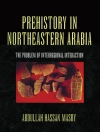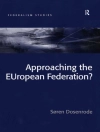‘Networks on Networks’ demonstrates the relevance of the network properties of the pore-space in the soil to the organization of understanding of plant growth, soil formation, river network development, and the water cycle, with the ability to directly relate time scales from seconds to the cycle of supercontinent break-up and assembly (Wilson Cycle). In the process, implications regarding the viability of the strong vs. the weak (Earth only acts like a living organism) Gaia hypotheses are addressed. All of this makes ‘Networks on Networks’ of great interest to those in the climate change community.
Key Features:
- Presents research into the physical rules that can underlie the behaviour of biota, as well as the geochemistry of soil development.
- Demonstrates the relevance of the network properties of the pore-space in the soil to the organization of understanding of plant growth, soil formation, river network development, and the water cycle.
- Addresses both nutrient and water transport limitations of processes from chemical weathering to vascular plant growth.
- Addresses the question of the extent to which soils can facilitate plant growth, and what limitations on plant sizes, metabolism, occurrence, and correlations can be formulated thereby.
Содержание
Preface
Acknowledgements
Author biographies
1 Introduction
2 Networks in ecological systems
3 Percolation theory, effective-medium approximation, and upscaling
4 Predicting morphological, flow, and transport properties of porous media
5 Solute transport and reaction rate in heterogeneous porous media
6 Water transport and storage
7 Water transport in plants
8 Allometric scaling and metabolism
9 Edaphic constraints: role of soil in vegetation growth
10 Geomorphological applications of percolation theory: river networks, and weathering and soil depths
11 Ecohydrological applications: watershed hydrology and water balance
12 Hazards to plants and vegetation: disease propagation, deforestration, and forest fires
13 Edaphic constraints: revisiting the gaia hypothesis
Об авторе
Allen Hunt was trained as a physicist in the application of percolation theory to transport in disordered systems. Post-doctoral experience in soil physics, geomorphology, and hydrology acquainted him with a series of difficult physics problems in porous media, particularly those of soil formation and soil processes. Hunt has over 150 refereed publications in the above fields, climate dynamics, and biological sciences in 45 traditionally archived journals, including Nature. He has been a Fulbright Scholar, and a National Science Foundation Program Director. He is currently Professor of Physics at Wright State University. His book, Percolation Theory for Flow in Porous Media (Lecture Notes in Physics, Springer) has gone through three editions in the past 10 years. He has earned teaching distinctions at the local and national levels, and his Ph D student, Behzad Ghanbarian, received the Turcotte Award in 2015 from the American Geophysical Union for his dissertation advancing the science of non-linear geophysics.
Muhammad Sahimi is Professor of chemical engineering and materials science, and the NIOC Chair in petroleum engineering at the University of Southern California in Los Angeles. His research interests include flow, transport, reaction, sorption, and deformation in porous media, percolation theory, fracture and failure of heterogeneous materials and rock, and application of artificial intelligence to such problems. He has published over 400 papers and three books, is a Fellow of the American Institute of Chemical Engineers and the American Physical Society, and has received numerous research and teaching awards, including, among others, Humboldt Foundation Research Fellowship Award, the Khwarizmi International Award for Distinguished Achievements in Science, Life-time Achievements Award and Honorary Membership of the International Society for Porous Media, and the Kimberly-Clark Distinguished Lectureship Award.












